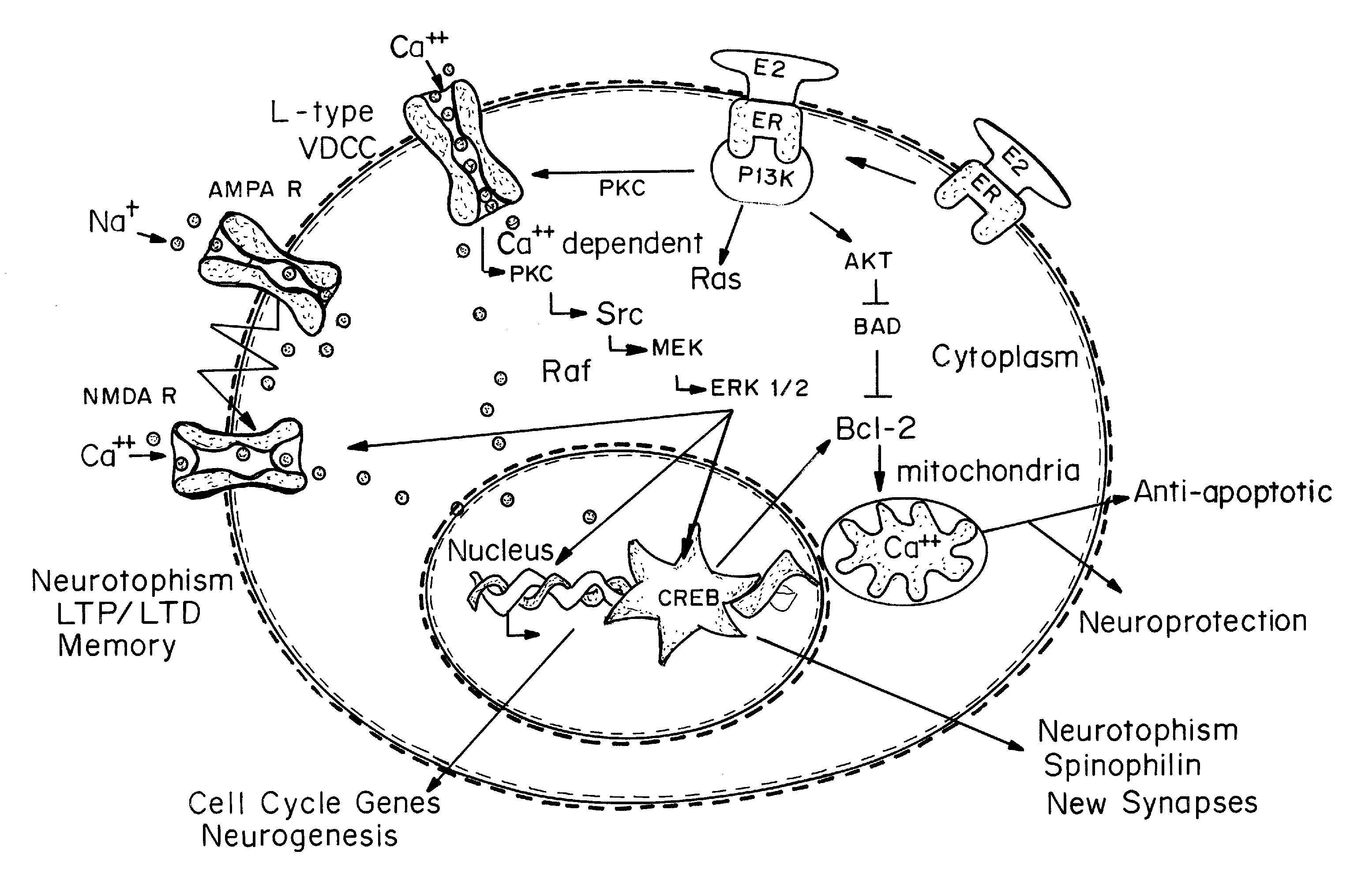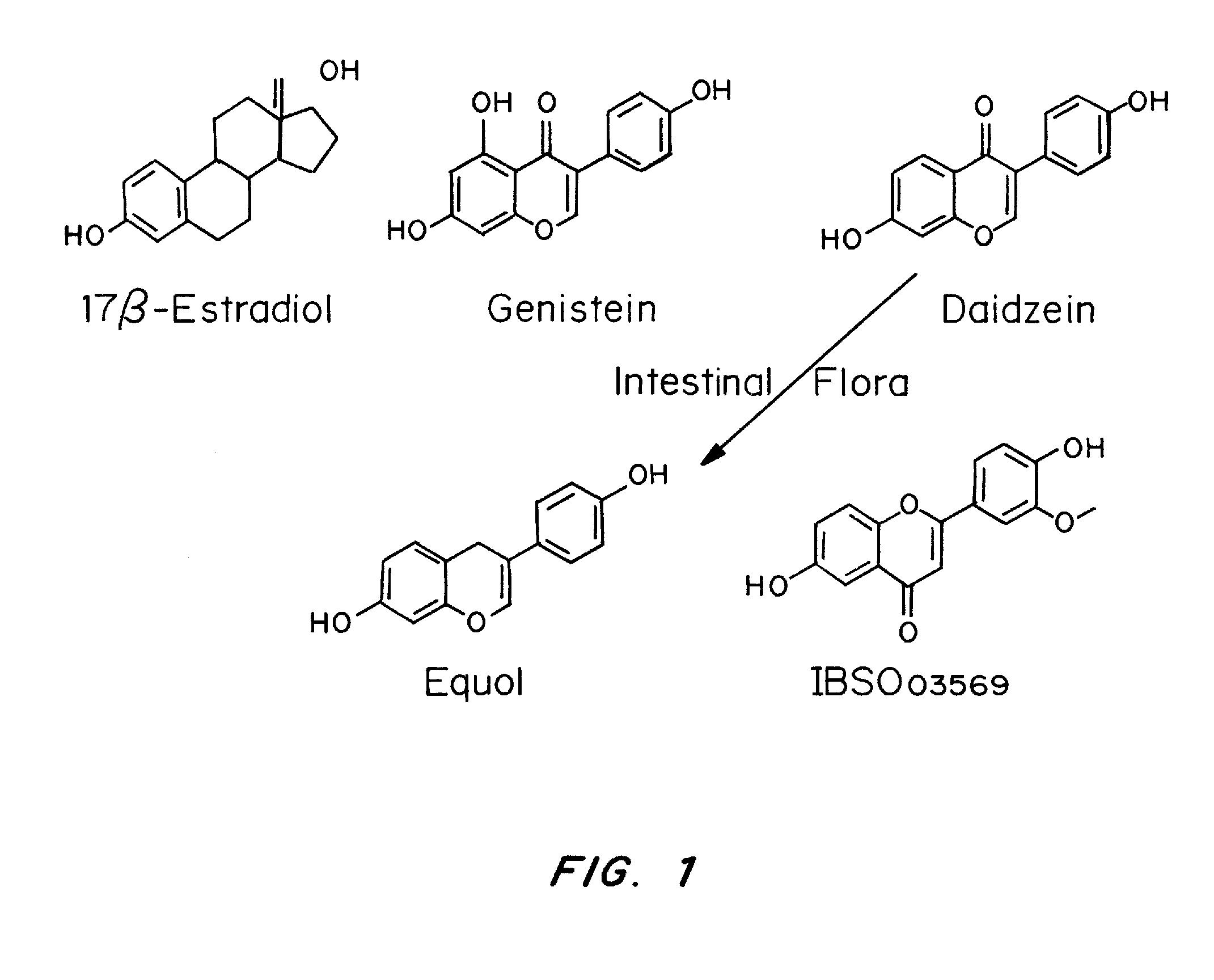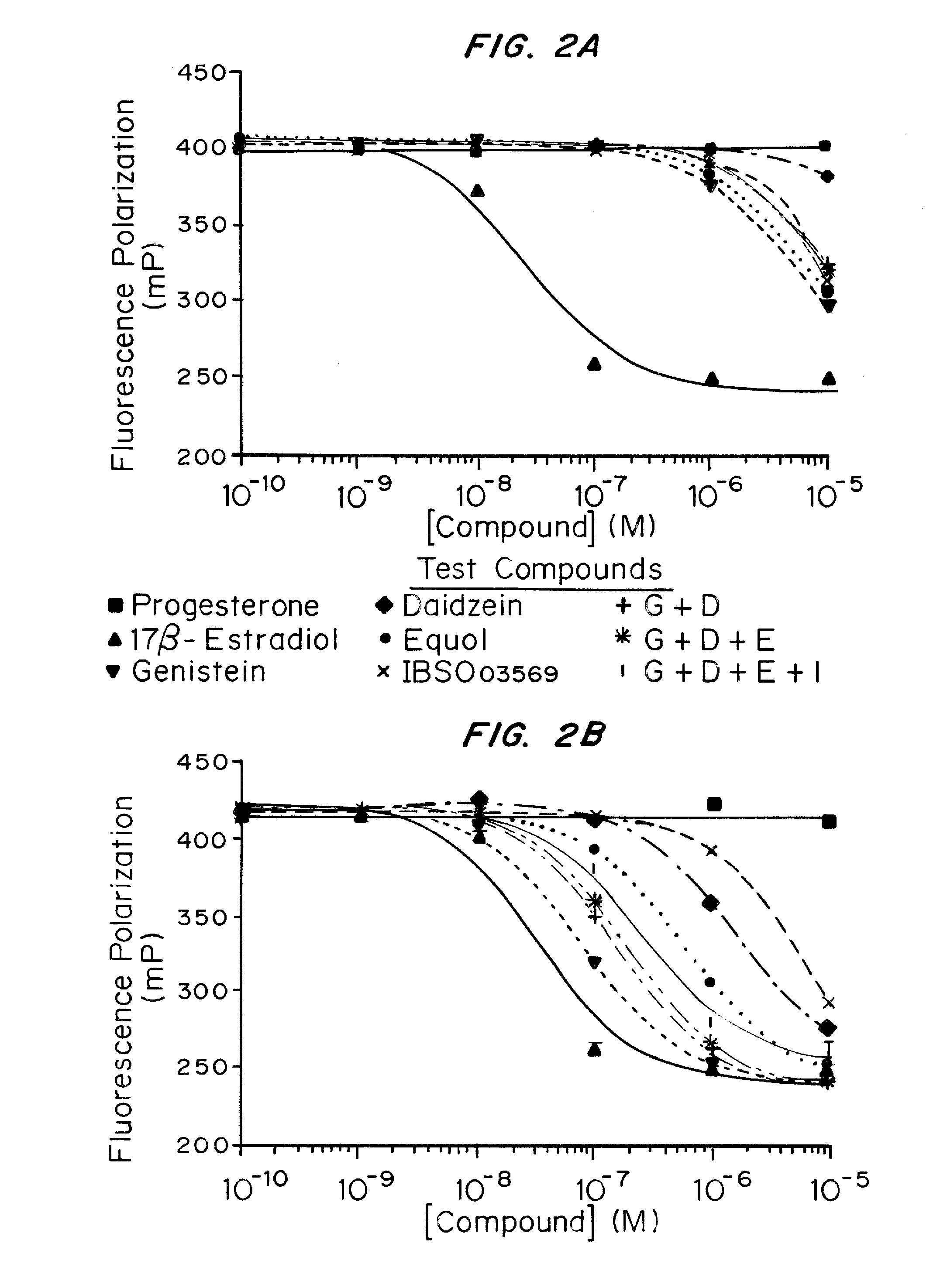Phytoestrogenic Formulations for Alleviation or Prevention of Neurodegenerative Diseases
a technology of phytoestrogenic formulations and neurodegenerative diseases, applied in the direction of anti-noxious agents, drug compositions, metabolic disorders, etc., can solve the problems of reducing the efficacy of this therapy, double danger for women, and potential long-term risks of this therapy, so as to improve the expression of anti-apoptotic proteins, prevent or alleviate neuronal damage, and sustain viability
- Summary
- Abstract
- Description
- Claims
- Application Information
AI Technical Summary
Benefits of technology
Problems solved by technology
Method used
Image
Examples
example 1
Identification of PhytoSERMS
[0075] ERβ has been associated with estrogen-induced promotion of memory function and neuronal survival. Based on the optimized complex structure of human ERβ LBD bound with genistein, computer-aided structure-based virtual screening against a natural source chemical database was conducted to determine the occurrence of plant-based ERβ-selective ligands. Twelve representative hits derived from database screening were assessed for their binding profiles to both ERs, three of which displayed over 100-fold binding selectivity to ERβ over ERα.
[0076] Materials and Methods
[0077] Identification of Molecules
[0078] Identification of Compounds in Database
[0079] All computational work was performed on a SGI Octane workstation equipped with the IRIX 6.5 operating system (Silicon Graphic Inc.). First, the 3D crystallographic structure of human ERβ LBD complexed with genistein was downloaded from the Protein Data Bank (PDB ID: 1QKM). The complex structure was fixe...
example 2
Preclinical Identification of ERβ-Selective PhytoSERM Combinations for Prevention of Neurodegeneration
[0090] The impact of ERb-selective PhytoSERMs when administered singly or in combination on neuronal survival and molecular / functional markers associated with prevention of neurodegeneration and Alzheimer's disease (AD) was investigated.
[0091] Materials and Methods
[0092] 17β-Estradiol was purchased from Steraloids (Newport, R.I.). Genistein, daidzein and equol were purchased from Indofine Chemical (Hillsborough, N.J.). IBSO03569 was purchased from InterBioScreen (Moscow, Russia). The structures of these compounds are shown in FIG. 1.
[0093] In Vitro Treatments: Test compounds (or combinations) were first dissolved in analytically pure DMSO (10 mM) and diluted in Neurobasal medium to the working concentrations right before treatments.
[0094] In Vivo Treatments: Test compounds (or combinations) were first dissolved in analytically pure DMSO and diluted in corn oil (50 ml of DMSO in...
PUM
| Property | Measurement | Unit |
|---|---|---|
| Fraction | aaaaa | aaaaa |
| Fraction | aaaaa | aaaaa |
| Fraction | aaaaa | aaaaa |
Abstract
Description
Claims
Application Information
 Login to View More
Login to View More - R&D
- Intellectual Property
- Life Sciences
- Materials
- Tech Scout
- Unparalleled Data Quality
- Higher Quality Content
- 60% Fewer Hallucinations
Browse by: Latest US Patents, China's latest patents, Technical Efficacy Thesaurus, Application Domain, Technology Topic, Popular Technical Reports.
© 2025 PatSnap. All rights reserved.Legal|Privacy policy|Modern Slavery Act Transparency Statement|Sitemap|About US| Contact US: help@patsnap.com



